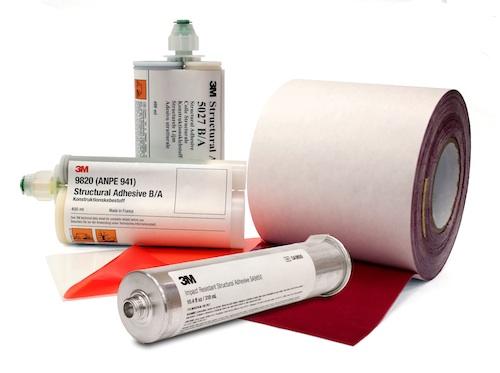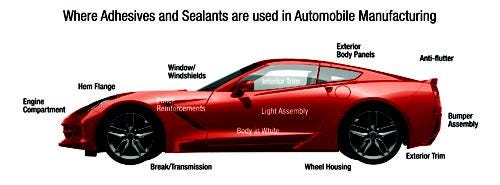Automotive Structural Adhesives Drive Material Changes
September 2, 2014

As more types of structural materials are used in cars and planes, joining them securely and reliably is getting complicated. A lot of work is being done to come up with new structural adhesive technologies that bond disparate materials, reduce the need for fasteners and improve welded bonds, and can be easily integrated into high-volume production lines. Requirements for the automotive assembly of production cars are especially tough to meet.
The laser-like focus of automotive OEMs on meeting regulators' gasoline emission targets for 2025 CAFE standards means that lightweighting is a major emphasis. That's because many easier-to-implement technologies for taking weight out, like in the powertrain, have already been done. In turn, adhesives can be a great enabler for using lightweighting materials technologies to reach those targets, Tonja Sutton, global strategic market manager for Dow Automotive Systems, told Design News.

Materials substrate technologies for automotive lightweighting include a growing list: aluminum, some composites, some magnesium, and also some advanced high-strength steels with a difference balance of properties from previous steels. Others are polymers such as glass-filled sheet molding compounds and reinforced nylon. Adhesives are especially effective at bonding dissimilar materials that often can't be joined using rivets or welds. Structural adhesives also help reduce noise, vibration, and harshness, and can improve crash performance.
There are many cases of different types of polymer components that must be bonded to other structures, Mansour Mirdami, chief engineer for Dow Automotive Systems, told us. For example, in the front-end module, a structural component made of a glass-filled composite may be bonded to a metal frame. Adhesives may be used for such structural purposes or for other areas, where a component has some structural contribution but it's not a significant one, like the rear lift gate.
"When we look at joining with adhesives, we need to know three things," said Sutton. "First, what are the substrate materials we're bonding? They may have different requirements. Second, we look at where in the manufacturing process we're going to do the assembly: in the body shop portion where the body is assembled and welded, or in the later, trim shop portion?" Assemblies done in the body shop or paint shop stages require adhesives that can withstand high temperatures, and their application must be adapted to those assembly requirements. If an assembly occurs in the trim shop, that means room-temperature joining, and the possibility of accelerating cure times with localized heating or induction curing. The third question is, what is the application: a structural or a hang-on part?
About the Author(s)
You May Also Like





